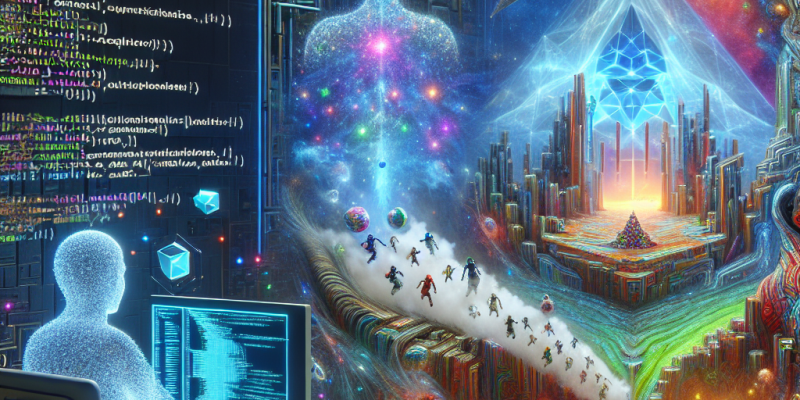Generative AI Models in Gaming: Crafting Unique In-Game Experiences

The gaming industry is on the precipice of a revolution, driven by advancements in artificial intelligence (AI). Among these, generative AI models stand out as game-changers, enabling developers to craft captivating and unique in-game experiences that were once thought to be the realm of fantasy. These models not only transform how games are designed but also redefine player interaction and engagement.
What are Generative AI Models?
Generative AI refers to algorithms that can generate new content, whether that be text, images, music, or even game levels, based on the data provided to them. Unlike traditional AI, which primarily focuses on analyzing existing data, generative models have the power to create novel outputs. Popular frameworks such as OpenAI’s GPT and DALL-E, as well as other deep learning techniques, have paved the way for these innovations.
In gaming, generative models utilize vast datasets—ranging from visual assets to gameplay mechanics—to produce new worlds, characters, items, and narratives, ensuring a fresh experience for players.
Dynamic Content Creation
One of the most distinctive advantages of generative AI in gaming is its capability for dynamic content creation. Game developers can use generative models to produce endless variations of game environments, levels, and challenges. For instance, open-world games could utilize AI to generate landscapes, quests, and even characters. This not only enhances replayability but also allows for the creation of expansive worlds that keep players engaged longer.
Procedural Generation 2.0
Procedural generation, a technique used in many games to create algorithmically-generated content, receives a significant upgrade with generative AI. Rather than relying solely on predefined algorithms, generative models can understand context and creativity, producing more varied and intricate results. Titles such as Minecraft and No Man’s Sky have successfully employed procedural generation, but with advancements in AI, the possibilities are now exponentially greater.
Enhanced Storytelling
Generative AI can revolutionize storytelling in games. Imagine a narrative that adapts in real-time to player decisions, with dialogue options and plot twists generated on the fly. AI-driven narratives can analyze player behavior and preferences, crafting personalized experiences that resonate deeply with individual players. This not only increases immersion but also encourages players to explore different choices, leading to unique story trajectories.
Non-Linear Narratives
Games such as The Witcher or Mass Effect allow for some level of player choice in narratives, but generative AI can take this concept further. With AI, game narratives could become entirely non-linear, morphing based on player interactions and emerging player-driven stories, facilitating a deeper emotional connection to characters and events.
Personalized Experiences
Personalization is a cornerstone of modern gaming. AI algorithms can analyze player behavior, preferences, and skill levels, customizing in-game experiences accordingly. Generative AI can dynamically adapt challenges, quests, and interactions based on player profiles, ensuring that no two players have the same experience.
AI Companions and NPCs
Non-player characters (NPCs) can also benefit significantly from generative AI. AI companions can learn and adapt to a player’s style, becoming more engaging and supportive over time. This creates an emotional bond between players and characters, enhancing the overall gaming experience.
Challenges and Ethical Considerations
Despite the potential of generative AI in gaming, certain challenges must be addressed. Quality control is crucial; while generative models can create diverse content, they may also generate elements that are inconsistent or low-quality if not properly trained or supervised. Moreover, ethical implications arise concerning copyright, originality, and potential biases embedded in AI-generated content.
Community and Collaboration
Developers must also consider how generative AI impacts the community aspect of gaming. Harnessing AI can invite players to become co-creators, allowing them to generate and share content, which can further enrich the gaming experience. This collaborative approach can foster a vibrant community, blurring the lines between developer and player involvement.
Conclusion
Generative AI models are reshaping the landscape of gaming, offering pathways to unparalleled creativity and player engagement. By harnessing the power of AI, developers can craft immersive experiences that adapt to individual players, elevate storytelling, and foster community interaction. As the technology continues to evolve, the question is not whether generative AI will play a role in gaming’s future, but rather how it will redefine the very essence of gameplay itself. The journey into this new era is just beginning, and the possibilities are boundless.














